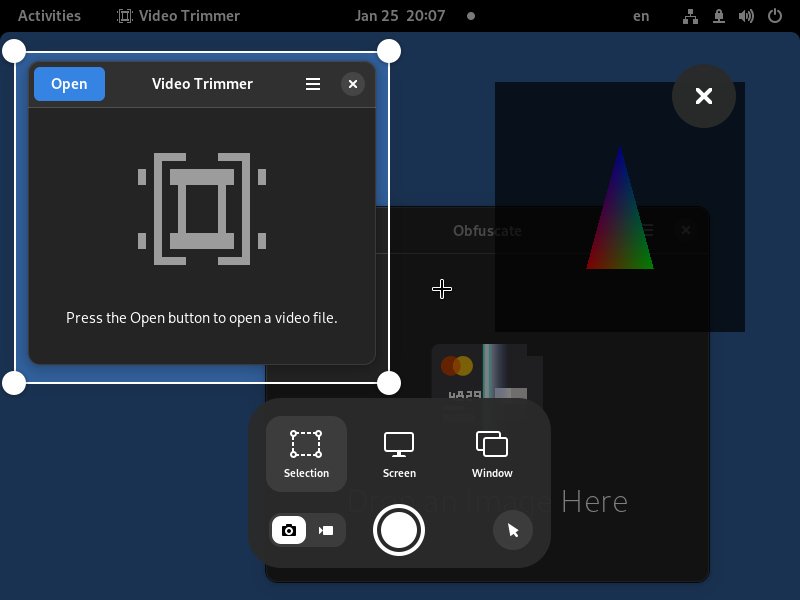(Disclosure: The Verge’s editorial staff is also unionized with the Writers Guild of America, East.)
The WGA made it crystal clear from the jump that its members were ready for the fight of their lives in pursuit of a new minimum basic agreement — the official guidelines that determine how workers are compensated for their labor — designed to better address the tectonic shifts in the entertainment industry. But however good a new deal you might have been hoping for, what the WGA managed to achieve is truly monumental in a way that can’t be overstated, and it’s going to make the business of TV and movie making much more equitable over the next few years.
Though the WGA’s members have until October 9th to cast ballots deciding whether they want to ratify the new proposed contract, leadership from the boards of both the WGAE(ast) and WGAW(est), as well as the guild’s negotiating committee, all voted unanimously to recommend the “exceptional” deal, and it’s not hard to understand why that is.
:format(webp)/cdn.vox-cdn.com/uploads/chorus_asset/file/24964972/A_word_from_the_Cryptkeeper_Photo_by_JW_Hendricks.jpeg)
WGA / Brittany Woodside
Minimum pay bumps and the end of TV “mini-rooms”
The WGA’s new contract guarantees “staff writers and Article 14 writers (story editors/executive story editors)” will see increases in their basic weekly wages for the next three years — 5 percent in the first year, 4 percent in the second, and 3.5 percent in the third. Sixty days after the contract is ratified, writer-producers like the showrunner and other above-the-line co-producers who have writing responsibilities will receive a new minimum weekly rate “amounting to a 9.5 percent premium over the story editor / executive story editor rate.” When staff writers are individually responsible for writing particular episodes, they must now be paid script fees on top of their basic weekly wages.
In addition to straightforward pay bumps, the WGA has also secured television writers more resources by way of minimum staffing requirements designed to roll back the rise of “mini-rooms” in which very small teams would be hired (and generally underpaid) to pen full-sized projects. Now, rather than the AMPTP being able to keep writers rooms’ artificially small, their headcounts will be determined by the length of a show’s season (except for in instances similar to The White Lotus and Yellowstone where a single person writes every episode).
Going forward, at least three writers must be hired for shows consisting of six episodes or fewer. If a season has between 7-12 episodes, five staff writers must be hired, and for shows with more than than 13 episodes, that number jumps to six. At all sizes, at least three of the writers in a show’s room must also be writer-producers, and it’s going to be interesting to see over the next few years what impact that specific rule is going to have on the pipeline that develops new junior staffers just getting into the industry.
Staffing minimums were one of the biggest changes that the WGA pushed for during contract negotiations. But because of the writer-producer requirement, there has been some valid concern that newer writers might still struggle to find opportunities outside of larger rooms where there’s more space for them as well as more seasoned staffers at higher levels.
It’s important to note that these minimums aren’t necessarily maximums, meaning that showrunners should be able to push for more bodies at the onset of a gig. And even though studios are almost guaranteed to push back on those kinds of asks, the new contract does include other benefits like minimum writers room lengths that are designed to assist newcomers with their professional development.
:format(webp)/cdn.vox-cdn.com/uploads/chorus_asset/file/24964986/1695895500.jpg)
Getty Images / Mario Tama
Showrunners are writers whose prep time is valuable, and writers need to be on set
As common as the word “showrunner” has become in our lexicon, it’s never been an official role codified into the WGA and AMPTP’s contract, which is partially why some studios like Marvel have gotten into the habit of downplaying the title when talking about its projects. The new contract clearly defines showrunners as head writers and people responsible for making hiring decisions regarding a project’s other staff writers.
Part of a showrunner’s job is reaching out to other writers in the earliest stages of a project before it’s even been officially greenlit for the first time or for a new season. Under the new contract, once at least three writer-producers, including the showrunner, are attached to a gig before it’s been officially greenlit, that development room is guaranteed at least 10 weeks of employment.
After a show has been greenlit, “the minimum staff must be guaranteed at least 20 weeks or the entire duration of the post-greenlight room, whichever is shorter.” Also, while the overall number of “weeks worked in the development room can be credited against the guaranteed weeks in the writers’ room,” the time they are paid for in development rooms explicitly cannot be credited against the time they’re paid for full-on writers rooms.
By definition, these new rules ensure a certain level of job security that’s crucial to professional development at all levels. This same is true of the contract’s mandate that a showrunner and two writer-producers must be paid to work on set “for the lesser of 20 weeks of production or the duration of production.”
One of the more nuanced points the WGA’s members emphasized throughout the strikes is how, in addition to literally putting writers in better positions to provide last-minute rewrites in the midst of productions, being on set and able to actually see the process of how one’s writing is produced on a technical level is key to professional growth. Now, writers are guaranteed to have a chance to see their work coming to life, and the contract also makes it so that those two non-showrunner spots don’t always have to go to the same people, meaning that multiple staffers can have that same opportunity.
:format(webp)/cdn.vox-cdn.com/uploads/chorus_asset/file/24964999/1665750267.jpg)
Getty Images / Photo by Michael M. Santiago
Screenwriting second steps and speedy payments are in
Studios used to be able to choose at their own discretion whether to bring writers back in for paid rewrites, known commonly as second steps, but that process is now required and comes with a flat compensation rate. Whenever a screenwriter is hired to draft a screenplay, they must be tapped for a second step for 200 percent of their MBA minimum, regardless of whether they’re writing original or non-original screenplays. Streaming movie writers working on projects with budgets of $30 million or more will see their story and teleplay minimum compensation jump to $100,000, as well as a 26 percent jump in their residual payment rates.
Per the contract, studios will also now be required to pay screenwriters in a more timely fashion. Should a writer be hired for a deal that pays less than 200 percent of their minimum MBA-guaranteed rate, they must be paid “50 percent of their fee on commencement.” Even if the writer hasn’t turned in a script nine weeks into their deal, studios are required to pay them another 25 percent of their fee, and the final 25 percent is due upon final delivery of a script.
In the same way paying people more materially improves their working conditions, so, too, does ensuring that employees are paid expediently because of how it puts money in people’s bank accounts. This also demonstrates that studios are actually committed to giving workers what they’re owed.
Workers being forced to wait for checks while companies take their sweet time paying invoices is an all-too-common situation that — by design — is often difficult for individuals to quickly rectify. While this contract is obviously specific to the WGA, at a time when more and more workplaces are organizing, it wouldn’t be surprising to see other unions push for similar protections.
:format(webp)/cdn.vox-cdn.com/uploads/chorus_asset/file/24965004/Name_tags_for_El_Segundo_and_a_sign_for_streaming_transparency.jpeg)
WGA / J.W. Hendricks
Better residuals and more streaming data transparency
Bigger residual payments and access to more data about how streaming shows are actually performing were two of the most contentious issues the AMPTP fought the WGA on, and while the studios probably won’t be getting into the business of radical transparency anytime soon, the union did make some very significant wins. Though the public won’t be made privy to hard stats about how streaming films and TV shows are performing on various streamers, the AMPTP has agreed to share “the total number of hours streamed, both domestically and internationally, of self-produced high budget streaming programs” with the WGA.
Those figures will be kept confidential, but the WGA will be able to share them with members in aggregate form, and it will use them to determine viewership-based bonuses as well as new foreign streaming residual rates the union says will amount to a 76 percent jump in payments over the next three years. Shows and movies made for streamers that are viewed by 20 percent or more of a platform’s domestic subscribers within the first 90 days of the project’s premiere will receive bonuses “equal to 50 percent of the fixed domestic and foreign residual” they’re already receiving.
How this is all going to shake out isn’t entirely clear yet because the new contract’s method of determining residual payments is tied up in viewership metrics that vary from platform to platform. What we’re likely going to see going forward, though, is an even sharper uptick of promotion for new projects’ upcoming releases with an emphasis on getting people to watch within the windows that ultimately impact the size of these bonuses.
The WGA is keeping its eye on AI
Regarding the use of artificial intelligence tools, the WGA has been emphatic about its desire to keep the technology from harming human writers. While the new contract doesn’t ban AI’s use for MBA-covered work full stop, it does put in place a number of restrictions designed to prioritize human labor in the business of writing.
If writers hired by studios want, they’ll be free to “use AI when performing writing services, if the company consents and provided that the writer follows applicable company policies.” But studios cannot require hired writers to use AI tools, and they must also disclose to their writers “if any materials given to the writer have been generated by AI or incorporate AI-generated material.” The contract does explicitly prohibit the use of AI “to write or rewrite literary material” that might have been considered as the source material for a script, “meaning that AI-generated material can’t be used to undermine a writer’s credit or separated rights.”
Unsurprisingly, the AMPTP refused to give up its ability to train learning models on the scripts studios already own. But the WGA has reserved the right to “assert that exploitation of writers’ material to train AI is prohibited by MBA or other law,” suggesting that the organization intends to act as a litigious watchdog in the future. This provision comes just a few days after California state Senator Scott Wiener (D) proposed a bill designed to regulate AI at a state level. The bill would place a number of restrictions and transparency requirements on large language models and other kinds of “frontier” model systems that require a certain level of computational power.
If passed, the bill would also require the companies behind these AI tools to run rigorous tests to assess potential safety risks that would have to be disclosed to the state. We’re still a ways out from California’s senators being able to vote the bill — the exact terms of which are still being hammered out — into law. But it’s very easy to imagine a situation in which these regulations became a vital part of the WGA’s plan to hold the AMPTP accountable regarding Hollywood’s adoption of AI.
It’s going to be way easier for teams to get healthcare
In order to qualify for healthcare benefits, the WGA’s members have to make a certain amount of money annually — a rule that’s long made it much more difficult for writing duos and teams who typically collect their fees as if they were a single person. While these kinds of groups’ fees will still technically be divvied up, under the new contract, all writers will be documented as receiving the team’s full payment — which will make it significantly easier for them to hit the required minimums to receive insurance.
Note: This article have been indexed to our site. We do not claim legitimacy, ownership or copyright of any of the content above. To see the article at original source Click Here












